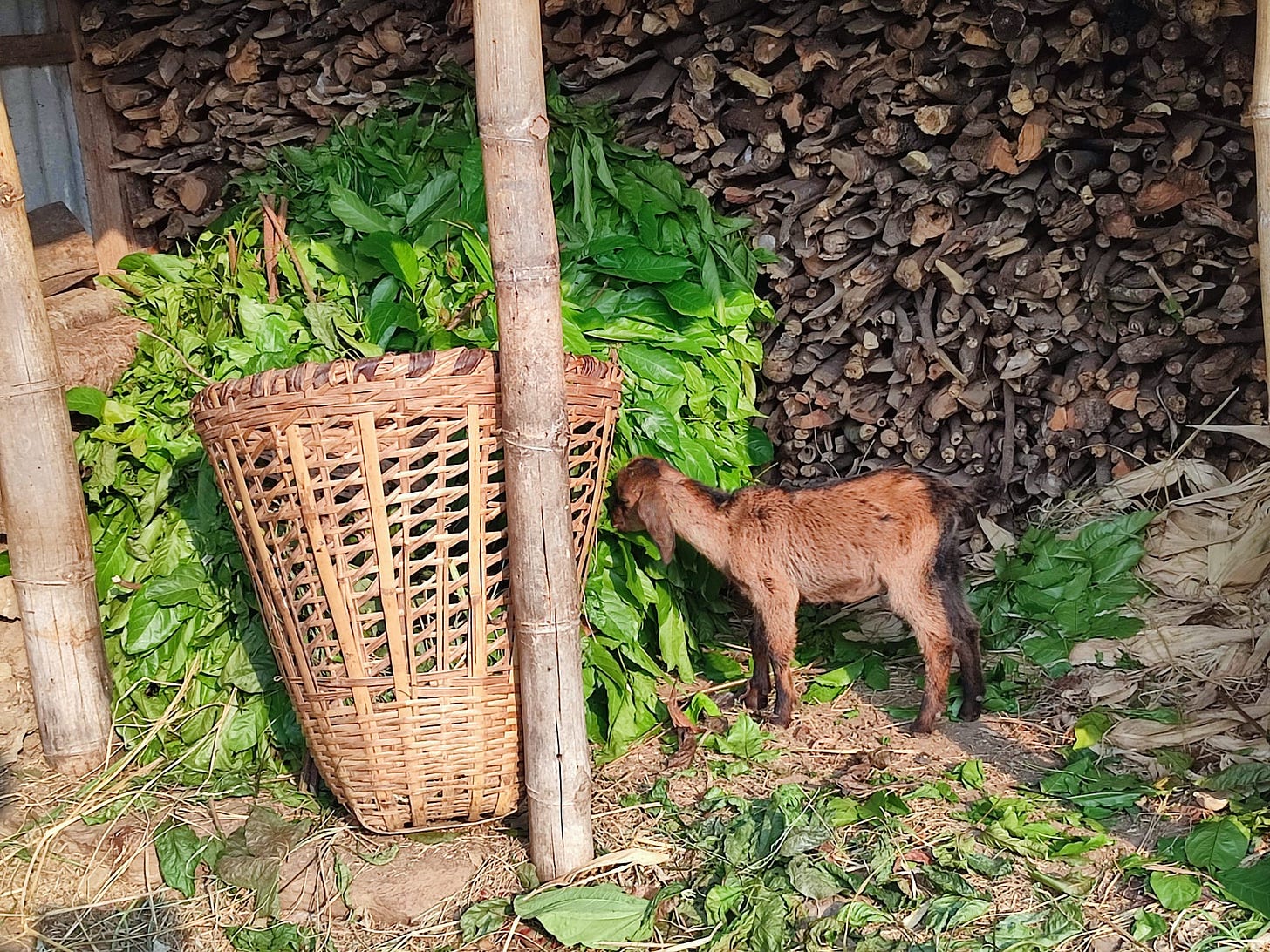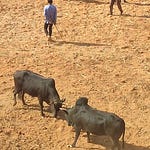As a kid visiting my great-grandmother’s village, I’d watch goats chewing cud. She’d say, “If they chew calmly, everything will be alright. But if it stops or chews too quickly, something big is on its way.” Recently, I saw a goat doing it again, just like those summers. Remembering her words, I filmed it and decided to finally research and uncover the truth behind this superstition.
I began by typing, "What is this secret way of goats eating their food?” The first thing that popped was rumination. This secret way was actually called rumination. This rumination is a two-step eating process: the animal swallows food, brings it back up to chew again, and then re-swallows it. And these types of herbivorous animals that can digest tough, fibrous plant materials are called ruminants. Examples of ruminants include cows, goats, sheep, giraffes, and deer.
I was like, but how is this possible? Humans can not do this, and they can? What makes them this special? I went over a few websites like National Geographic, Journal of Dairy Science, etc. Finally, I got very clear descriptions on YouTube. I was able to sum up a clear vision of how it works. So, here goes.
Their complex stomachs have four chambers, each with a unique role in digesting food.
The first chamber, called the rumen, is like a fermentation tank (a special chamber where the food begins to break down). Here, the food they swallow first gets broken down by tiny microbes—living organisms that help unlock nutrients from plant fibers. These microbes, along with saliva, work together to turn the food into a mix that the animal can use for energy. This is where most of the “magic” happens.
Then there’s the reticulum, which acts as a filter. Its structure looks like a honeycomb, and it captures smaller particles of food. If anything is still too large to digest, it sends it back up for another round of chewing—this is where the cud-chewing comes in. I realized my great-grandmother’s superstition about the goat chewing calmly or quickly might actually reflect how smoothly this process goes!
After that, the food moves to the omasum, the third chamber, which absorbs water and some more nutrients. This chamber has folds like pages in a book, increasing the surface area to absorb as much as possible from the fermented food.
Finally, the food reaches the abomasum, known as the "true stomach." Here, digestive juices break down the food one last time before it moves on to the intestines, where the final nutrients are absorbed.
As I dug deeper, I realized why humans can’t chew cud like goats. Unlike ruminants, which have four-chambered stomachs filled with special microbes to break down tough plant fibers, humans have just one chamber. Our digestion relies on strong acids and enzymes to do the job in one go. As I learned all this, I couldn’t help but wonder how efficient and specialized their digestive systems are—designed to make the most out of even the toughest plants. No wonder they can live off simple grass while humans need a varied diet!
Now, whenever I watch a goat or cow chewing, I feel like I’m in on a little secret. I also can’t help but think of my great-grandmother’s voice, seeing meaning in their calm, steady chewing. It’s amazing how the world of animals has all these hidden processes happening right in front of us, and sometimes it takes a moment of curiosity to dig into what we see every day.








Share this post